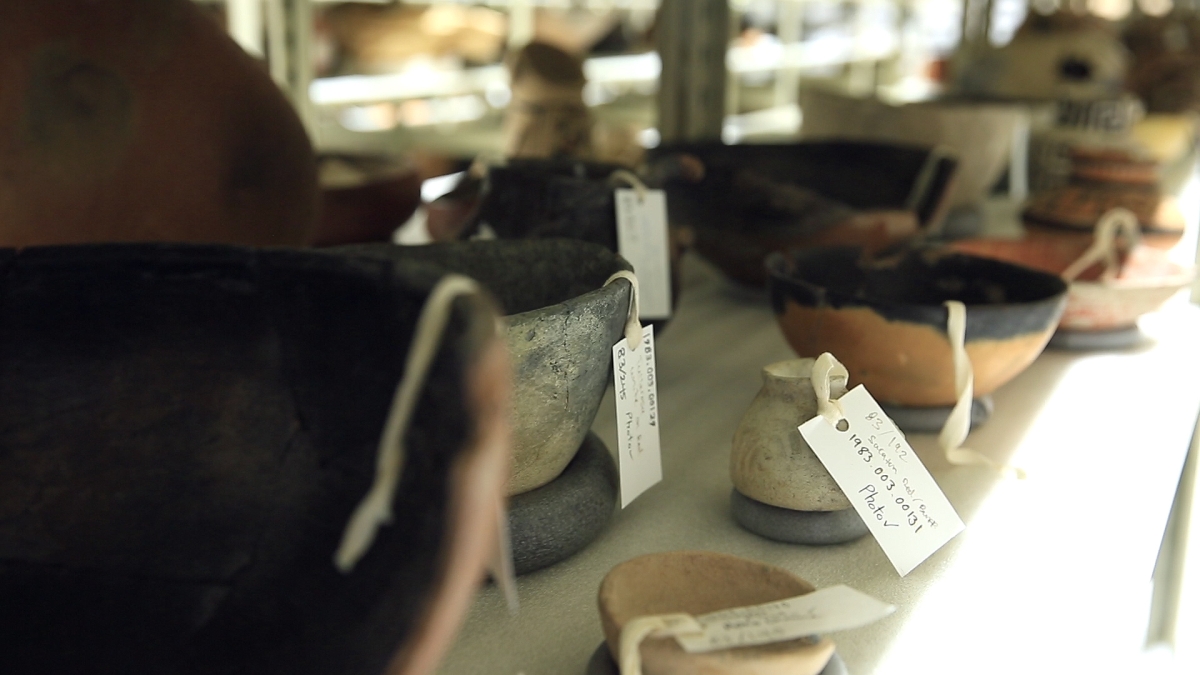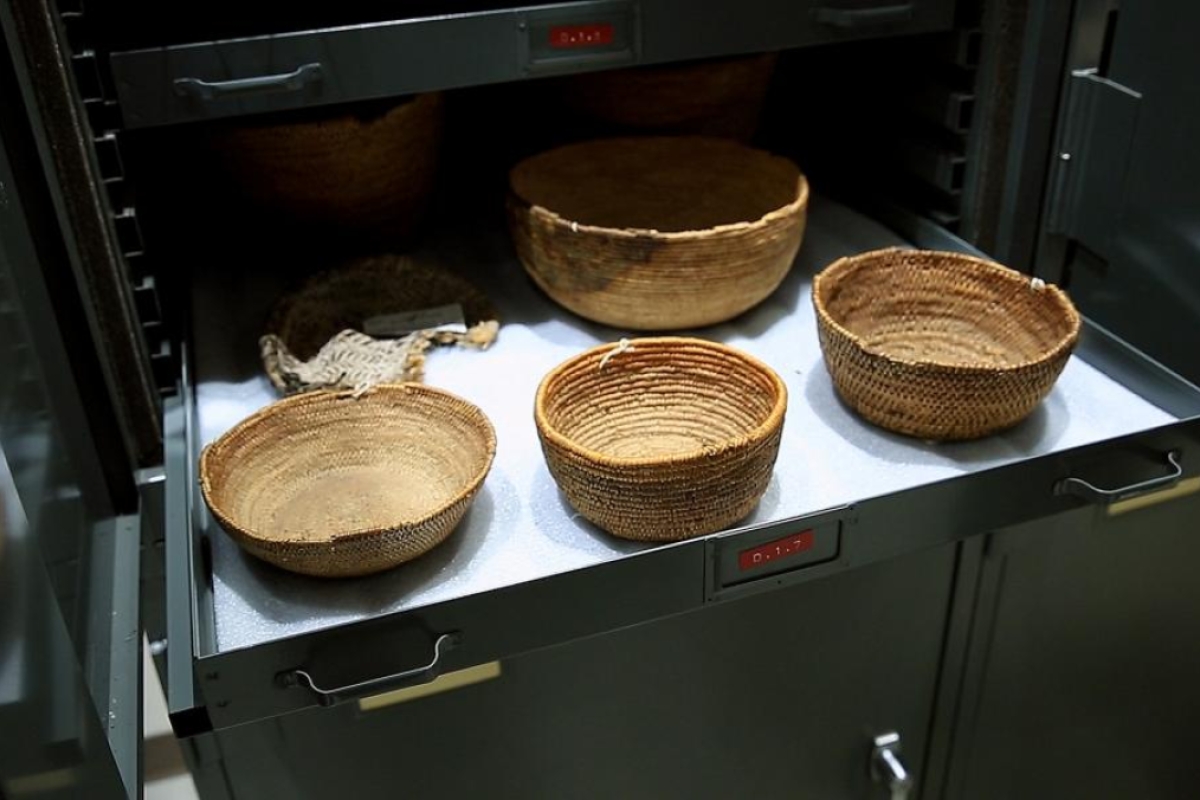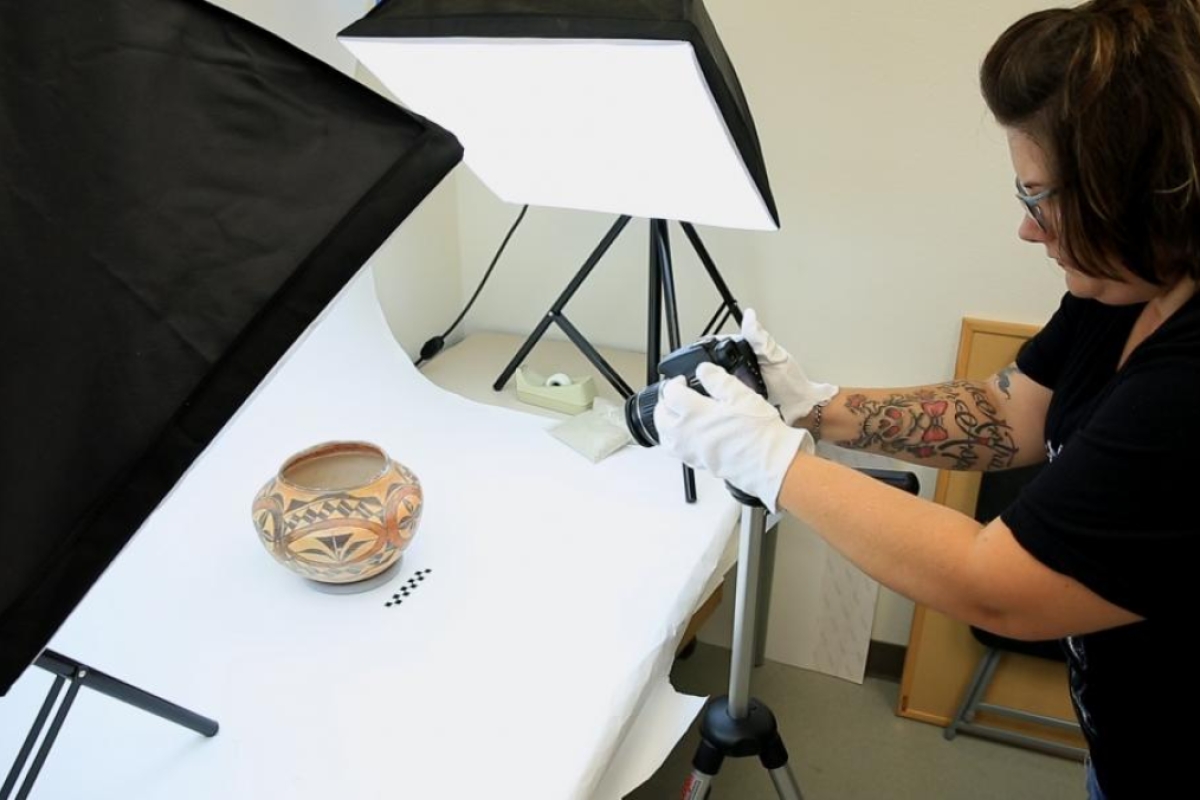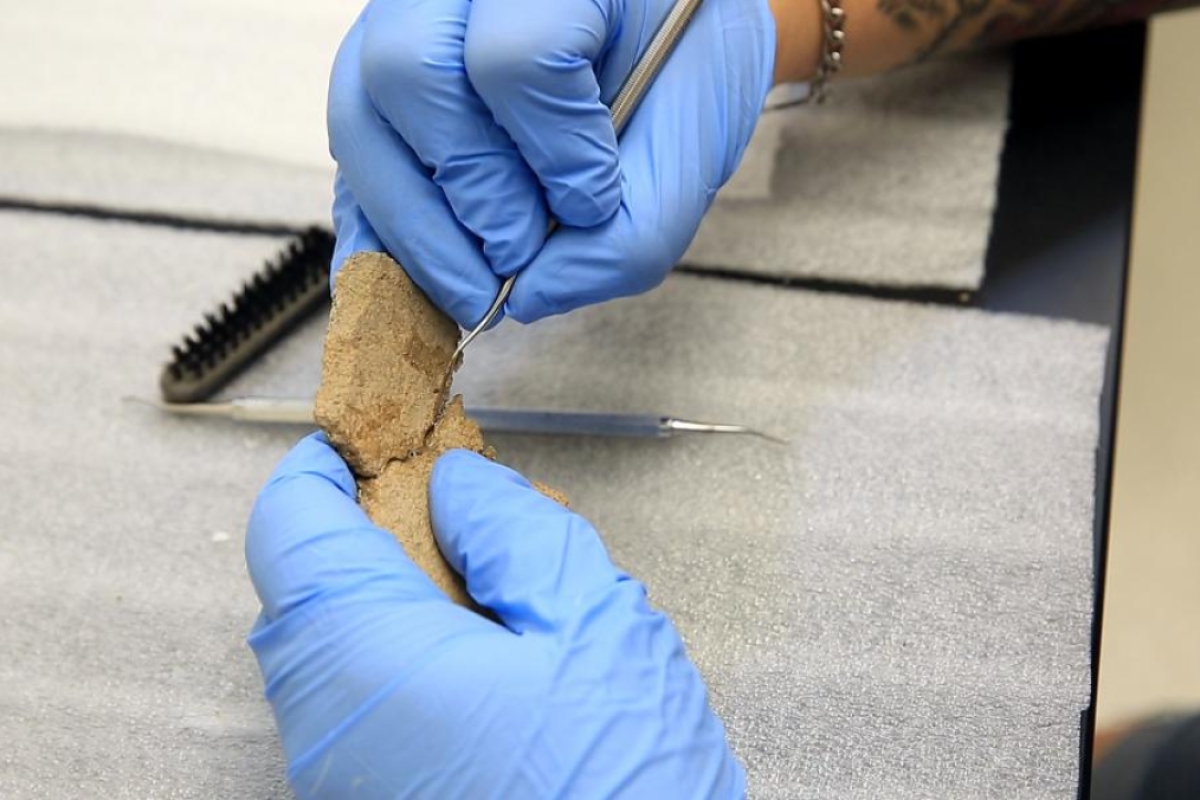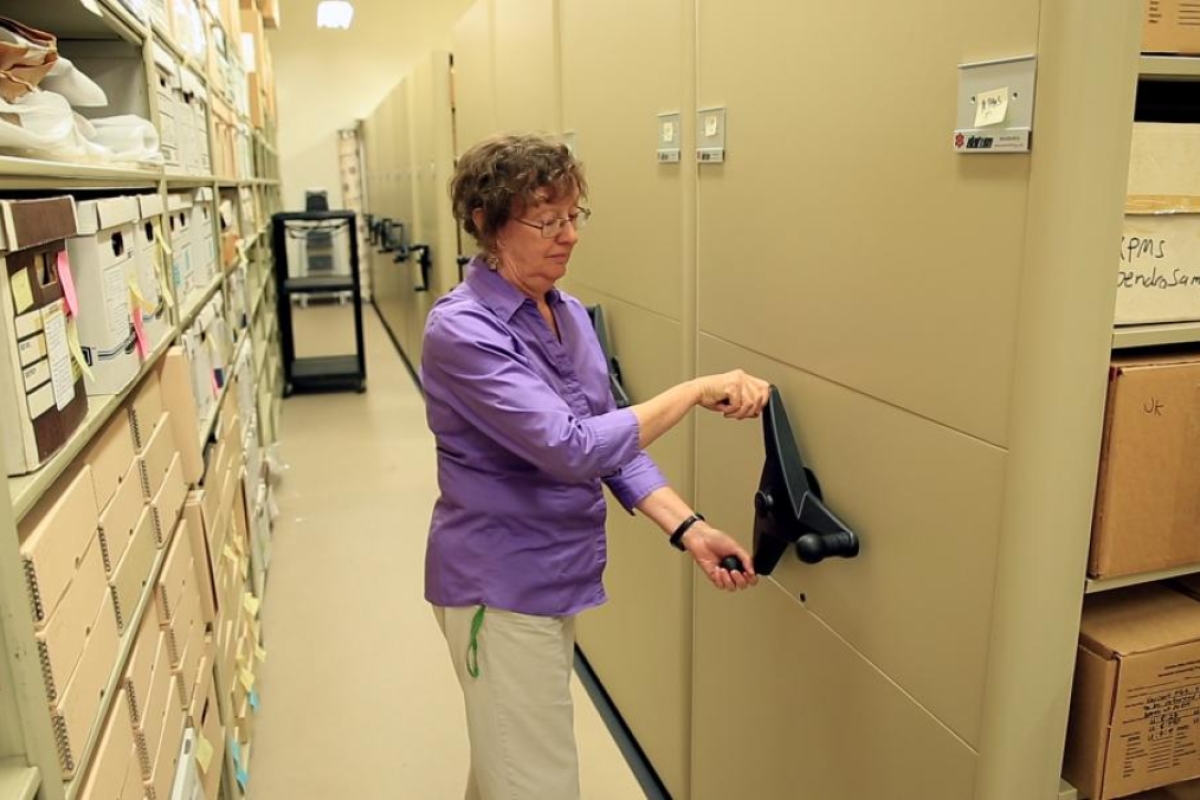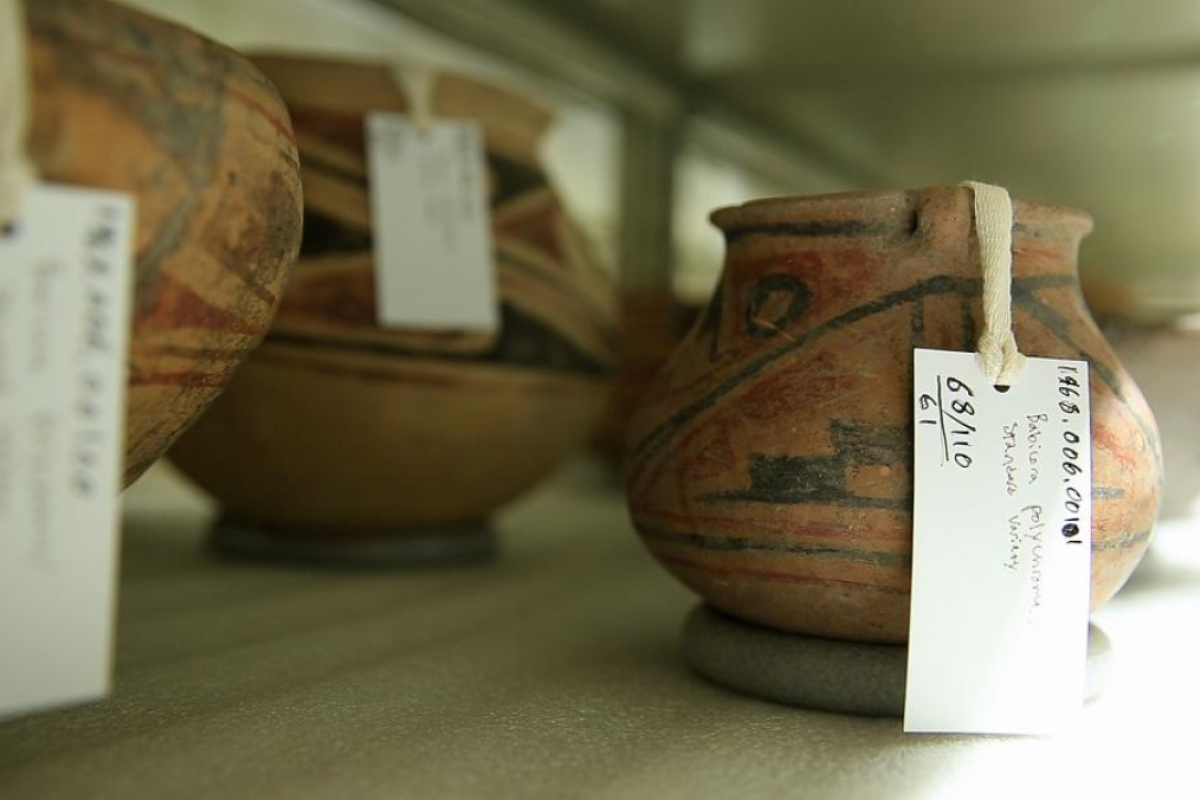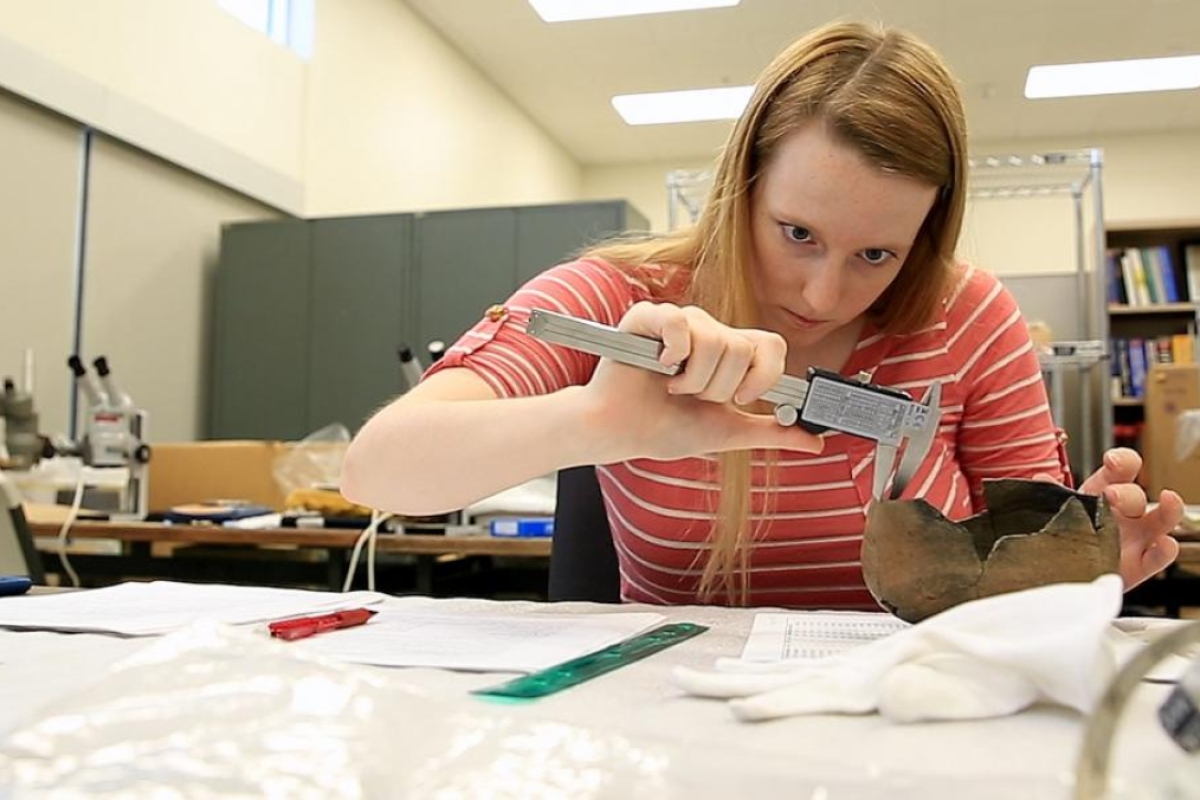In a nondescript building in an industrial area of Tempe, one room crackles with treasures of the ancient Southwest.
Here sit pots of Salado Polychrome, Show Low Black-on-Red, Sacaton Red, White Mountain Redware and others. The shelves are a tour across prehistoric Arizona, illuminated by the reds, oranges, ochres, browns, blacks and whites of canyons and deserts. There are giant polychromes — multicolored pots — used in feasts and a 30-gallon Hohokam water storage pot. It sat in the corner of a dwelling and was filled by smaller pots carried up from the canal.
The whole pottery room is part of Arizona State University’s archaeology collection. The collection is closed to the public, but officials hope to change that.
“What you see here is the tip of the iceberg,” curator Arleyn Simon said.
Simon, an associate research professor in the School of Human Evolution and Social ChangeThe School of Human Evolution and Social Change is an academic unit of the College of Liberal Arts and Sciences., recently led visitors on a tour of the facility, called the Center for Archaeology and Society Repository.
The whole-pottery room is the collection’s gem. There are more than 1,500 whole pots in the university’s collection. Periodic behind-the-scenes tours are given here. It’s where the objects seen in exhibits are kept.
The impression that comes from passing one’s eyes across the shelves is that ancient Arizona hummed with traveling traders. The names of the pottery types are a catalog of Arizona place names.
“Sometimes it’s hard to break free of that static idea of people,” Simon said. “Some groups moved around a lot.”
The pots are a study in contrasts: rough and smooth surfaces, elegant and utilitarian shapes, plain clay or elaborate geometrical designs that clearly took weeks to produce. (And that’s not counting the time it took to gather the plants and make the paint.)
“They were very skilled at the hand-building techniques they used,” Simon said.
There is humor and life and engagement in these everyday objects. The sense comes across that their makers would be amused and proud that people they couldn’t have imagined admire their work astride a gulf of thousands of years.
“They’re very much appreciated,” Simon said.
The anthropology department was founded in the 1960s, and the collection is spread all across the Tempe campus. “We’ve been in existence for about 20 years,” Simon said.
A row of metal cabinets in the back of the room holds finely woven basketry, wide-bladed stone knives used for hacking agave, deer-bone awls used to punch holes in basketry, and huge obsidian spear points.
Outreach from the collection is achieved at two places: the Innovation Gallery in the School of Human Evolution and Social Change building on the Tempe campus, and in the exhibit space at the Deer Valley Petroglyph Preserve in northwest Phoenix. Those two places are the collection’s living rooms, where things are put on display. The repository and other facilities are the attic.
“As various exhibits are developed, we constantly have things going out on exhibit,” Simon said.
It’s hard to put a number on the amount of objects in the collection because a good part of it is potsherds and lithic chips (pieces of stone discarded from making knives and arrowheads).
Simon estimates the whole collection at more than a half-million objects, “if you count the sherds and flakes.”
“We can learn a great deal from the potsherds and chipped stones,” she said. “But it’s mostly the finished products the public wants to see.”
Video by Ken Fagan/ASU Now
The reception area at the front door features an exhibit that sprung from a doctoral dissertation a few years ago on Hohokam pottery production. Bowls, jars, dishes, scoops and a parching tray from the Valley’s prehistoric days glow inside glass cases. Parching trays were used for toasting and dehusking grains.
“The pottery was very precious to them,” Simon said, pointing out mending holes drilled along a break in a bowl. The bowl was corded back together at some point by an anxious Hohokam. “Pottery took a lot of work to make,” she said.
Twenty students work at the center. “They help with collection management,” Simon said. “We constantly have to keep up with technology.”
This can involve repacking objects in state-of-the-art storage materials, instead of the paper boxes they came in from the field in the 1970s and so on. Students learn the necessary grunt work of archaeology and anthropology. Museum-studies students also work at the facility.
Beyond the reception area are labs, conference rooms, offices, storage, conservation workspaces for cataloging artifacts, a photography studio, and microscopes to look at different pottery materials. If materials can be traced to their sources, it tells researchers a lot about trade routes and migration.
“Students are very much involved with the content and the labels in the exhibits,” Simon said.
“We deal with old things, but we have to keep up with the new.”
— Arleyn Simon, curator of ASU's archaeology collection
In a conference room a grad student is transferring old cassette interviews of a deceased faculty archaeologist into digital format.
“We deal with old things, but we have to keep up with the new,” Simon said.
Back in the small photo studio, a pot is in the process of being reassembled from sherds. Students use archival glue that is made onsite. The glue can be dissolved with acetone in the future if needed. Reassembling pots from sherds looks like an exceptionally tedious puzzle. It’s not so bad because you can only do a few pieces at a time before you need to let it dry, Simon explained. Further complicating the reconstruction is the fact that some holes in pots were intentional, meant to let the spirits of the pot out.
There’s a huge storage room in back (big enough to park a tour bus). The shelves are stacked with boxes from the Roosevelt excavations. When Roosevelt Dam was heightened in the 1990s, archaeological surveys before construction brought in a haul of objects.
The room holds about 25 to 30 percent of the university’s total collection, which is scattered across several buildings on the Tempe campus.
Simon hopes to have all the collections consolidated. “It’d be nice to have it all in one place,” she said.
More Science and technology
2 ASU faculty elected as fellows to National Academy of Inventors
Arizona State University faculty members Bertram Jacobs and Klaus Lackner have been elected as fellows to the National Academy of Inventors (NAI). Both are being honored for research that…

Harvesting satellite insights for Maui County farmers
Food sovereignty can refer to having access to culturally significant foods, but Noa Kekuewa Lincoln believes it goes farther than that.“I think the concept goes beyond the foods themselves to having…
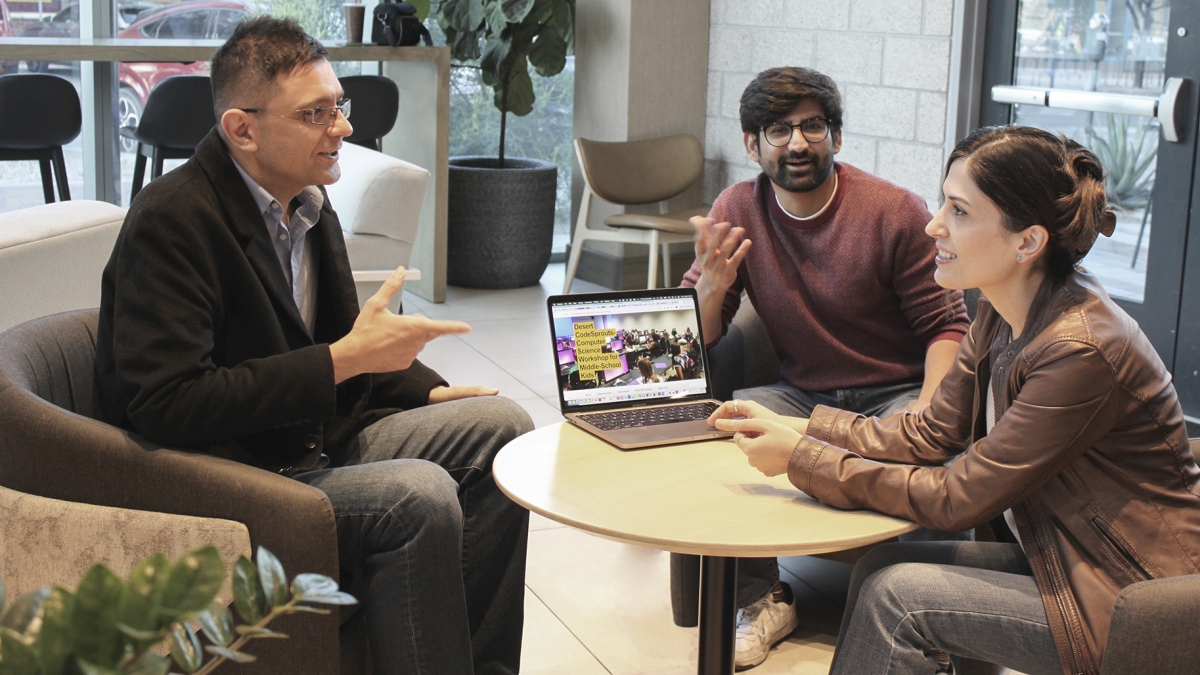
Google grant creates AI research paths for underserved students
Top tech companies like Google say they are eager to encourage women and members of historically underrepresented groups to consider careers in computer science research.The dawn of the era of…
